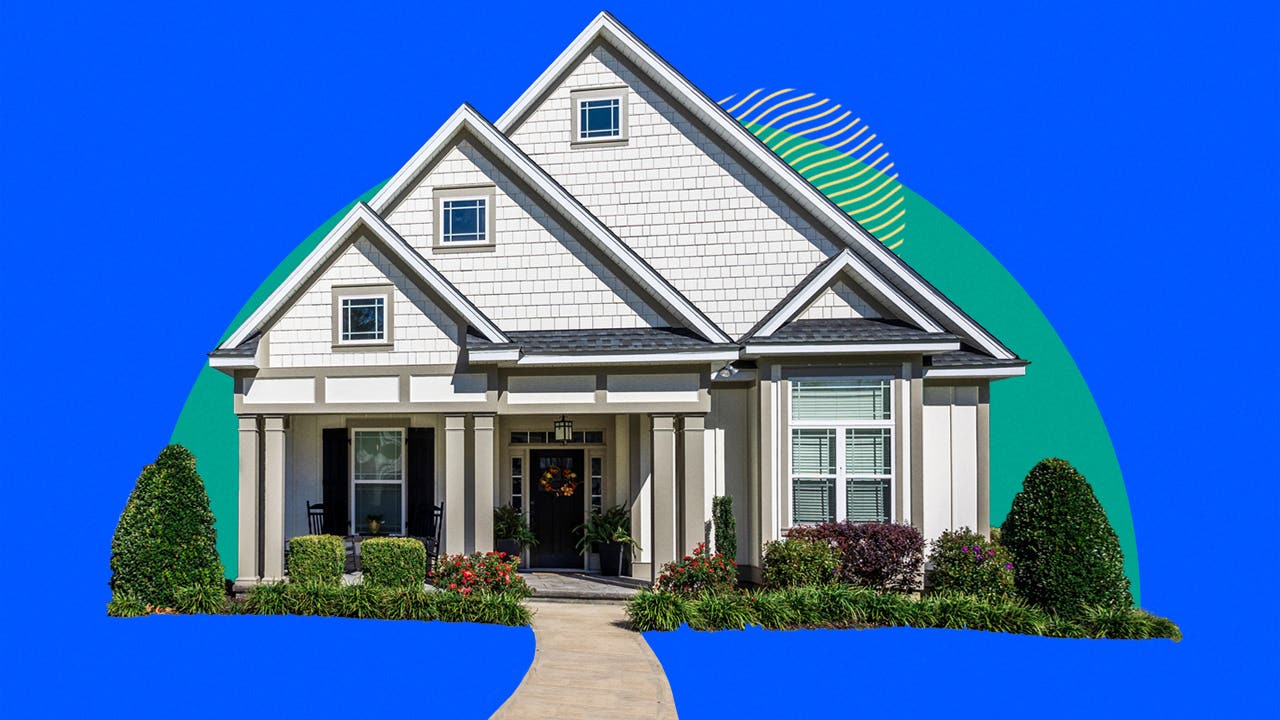Mortgage rate forecast September 2023: More volatility until the Fed weighs in

The Bankrate promise
At Bankrate we strive to help you make smarter financial decisions. While we adhere to strict , this post may contain references to products from our partners. Here's an explanation for .
To the dismay of homebuyers, mortgage rates have surged to their highest level in more than two decades. The sticker shock could ease a bit in September, but don’t expect rates to fall significantly this month.
The mortgage rate jump few saw coming
Mortgage rates have been volatile in the past year, pushing past 7 percent in 2022 far faster than anyone predicted. They calmed some in the first half of 2023, then began climbing again. The average rate on a 30-year fixed loan was 7.09 percent as of Aug. 2, according to Bankrate’s weekly national survey of lenders.
By mid-month, rates took off, jumping all the way to 7.36 percent — the highest mark since late 2000 — in Bankrate’s Aug. 23 survey. Rates then pulled back slightly, falling to 7.32 percent in Bankrate’s final survey of the month.
Not long ago, mortgage experts were calling for rates to fall all the way to 5 percent this year. Instead, the resilient economy means mortgage rates have held strong.
“Mortgage rates are remaining above levels we anticipated earlier this year as inflation pressure has persisted and consumer spending remains robust,” says Selma Hepp, chief economist at CoreLogic, a real estate data and analytics firm.
Economic data that is not too hot and not too cold would be helpful to mortgage rates and could get rates back down below 7 percent.— Greg McBride, Bankrate chief financial analyst
Mortgage rates could tip either way
Housing economists agree that the pandemic-era 3 percent rates aren’t coming back — but given the latest incline, they’re reluctant to make precise predictions for this month.
One potential clue: the Federal Reserve’s next move, which we’ll know when it concludes its next meeting Sept. 20.
“Recent volatility makes it difficult to forecast where rates will go next, but we should have a better gauge in September as the Federal Reserve determines their next steps regarding interest rate hikes,” says Sam Khater, chief economist at mortgage giant Freddie Mac.
For months, the major mortgage rate driver was inflation and the Fed’s response. The central bank’s rate hikes have tamed that factor some, and now, mortgage rates are being driven not just by inflation but by a variety of economic indicators.The official inflation reading for July was 3.2 percent, a decrease from the 2022 peak of 9.1 percent but still above the Fed’s target of 2 percent. It’s possible the Fed could raise rates again at its September meeting. While the policymaker doesn’t directly control mortgage rates, its moves set the overall tone for borrowing costs.
“We are at this critical juncture,” says Lawrence Yun, chief economist at the National Association of Realtors. “[Mortgage rates] can either break higher, up to 8 percent, or lower, to 6.5 percent.”
Along with the Fed’s ripple effect, fixed mortgage rates follow 10-year Treasury rates, which were at 4.1 percent in late August. Mortgages are typically priced about 2 percentage points higher than that. Not so, as of late.”The wild card is if investors are unloading Treasurys in a big way,” says Greg McBride, chief financial analyst for Bankrate. “For mortgage rates to hit 8 percent, the 10-year Treasury would need to get to about 5 percent, and that is likely only if bond investors head for the exits in unison.”
Some are optimistic about mortgage rates falling. The Mortgage Bankers Association (MBA) predicts rates will fall to 6.2 percent by the end of 2023
“MBA expects rates to move lower in the months ahead, which should help improve affordability slightly,” says Bob Broeksmit, the group’s president and CEO.
“Economic data that is not too hot and not too cold would be helpful to mortgage rates and could get rates back down below 7 percent,” says McBride, “but that has to be true for inflation, job growth, wages and consumer spending.”
Lisa Sturtevant, chief economist at Bright MLS, a listing service in the Mid-Atlantic region, says rates could retreat a bit. “Mortgage rates will probably hover around 7 percent through September,” she says. “But we should expect to see Treasury yields and mortgage rates decline as we head toward the end of the year. My current forecast is for mortgage rates to be between 6.5 and 6.75 percent at the end of 2023.”
More homebuyers won’t be able to make the math work
While the housing market cooled in late 2022 and early 2023, home prices are accelerating again. June 2023 marked the fifth consecutive month of rising home values, according to the S&P CoreLogic Case-Shiller U.S. National Home Price index.
Prices have held steady as demand for properties continues to outpace the supply of homes for sale. The median existing-home price in July was $406,700, up 1.9 percent from a year earlier, according to the National Association of Realtors.
The strong price trends show homebuyers have accepted the “new normal” of rates above 7 percent, Sturtevant says.
“It was extraordinary how quickly homebuyers adjusted to higher mortgage rates earlier this year,” says Sturtevant. “While buyers held back when rates initially surged to 7 percent last fall, they came roaring back to the market in 2023.”
Over the decades, American homeowners have proven their ability to adapt. In the 1980s, mortgage rates averaged 12 percent, and people kept buying homes.
One wrinkle now, though: Home values are higher than they’ve ever been.
“Rates above 7 percent are coupled with home prices that are at near record highs,” says Sturtevant. “The desire for homeownership is still strong, but there are going to be more and more prospective buyers for whom the numbers simply don’t pencil out anymore at 7-plus percent rates.”
Related Articles



